Text
The Country Liquor Market in India - A Tradition in Transition (2024)
The country liquor market in India is a complex and multifaceted sector, deeply ingrained in cultural traditions and catering to a vast consumer base. Estimated at a value exceeding INR 2 trillion (USD 25 billion) in 2024, this market presents both challenges and opportunities.
Market Dynamics:
Widespread Consumption: Country liquor enjoys significant popularity, particularly in rural areas and amongst certain demographics.
Unorganized and Fragmented: The market is characterized by a large number of small-scale producers, often lacking proper regulation and quality control.
Health Concerns: Concerns exist regarding the safety and quality of some country liquor due to unregulated production methods and adulteration practices.
Government Regulations: Government initiatives aim to streamline the market through licensing, quality control measures, and taxation reforms.
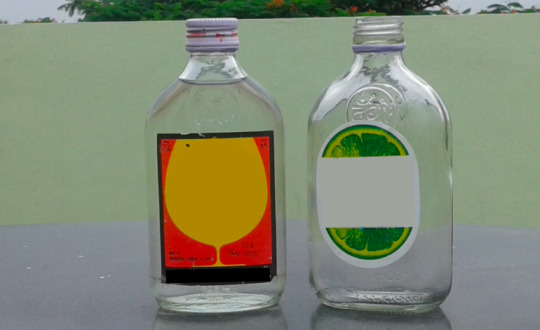
Market Growth Drivers:
Rising Disposable Incomes: As disposable incomes rise, some consumers within the traditional country liquor market segment might upgrade to branded alternatives.
Urbanization and Changing Preferences: Urbanization and exposure to branded alternatives could influence consumer preferences in the long term.
Market Challenges:
Competition from Branded Spirits: Branded alcoholic beverage companies are increasingly targeting consumers within the country liquor segment, offering safer and more consistent alternatives.
Shifting Consumer Preferences: Younger generations might be more receptive to branded options with standardized quality and diverse flavor profiles.
Stricter Regulations: Government regulations aimed at improving quality and safety standards may pose challenges for small-scale producers lacking the resources to comply.
Looking Ahead: A Focus on Formalization and Quality
The future of the country liquor market in India is expected to witness:
Formalization and Consolidation: Government initiatives and competition may drive consolidation within the market, with smaller producers seeking licenses and adhering to quality standards.
Focus on Branding and Marketing: Emerging brands within the country liquor segment might invest in branding and marketing to differentiate themselves and cater to evolving consumer preferences.
Technological Advancements: Adoption of new technologies like fermentation techniques and quality control measures can improve product safety and consistency.
Conclusion:
While the country liquor market faces challenges, opportunities exist for formalization, quality improvement, and brand development. By adapting to evolving consumer preferences, prioritizing safety standards, and embracing innovation, this traditional market can evolve to cater to a changing landscape.
0 notes
Text
Nuts and Dry Fruits Market Analysis & Key Players
The global nuts and dry fruits market is witnessing steady growth, driven by increasing consumer awareness of the health benefits associated with these nutritious snacks. As of 2024, the market size for nuts and dry fruits stands at approximately USD 70 billion, with a projected compound annual growth rate (CAGR) of 6% over the forecast period.
Key players in the nuts and dry fruits market include:
Wonderful Pistachios & Almonds
Blue Diamond Growers
Sun-Maid Growers of California
Olam International
Mariani Nut Company
These major players dominate the market landscape, leveraging their extensive distribution networks, brand recognition, and product innovation to maintain a competitive edge.
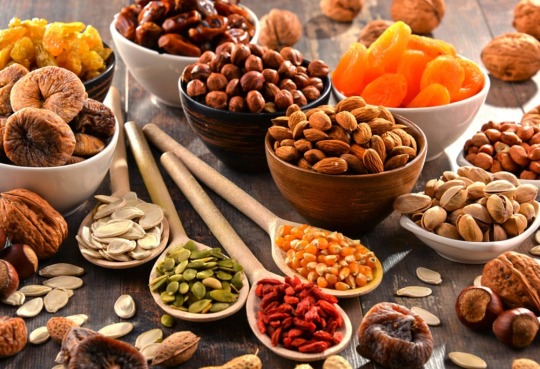
Market Segmentation:
The nuts and dry fruits market can be segmented by product type, including:
Nuts: Almonds, walnuts, cashews, pistachios, peanuts, etc.
Dried fruits: Raisins, cranberries, apricots, figs, dates, etc.
Additionally, the market is segmented by distribution channel, with sales occurring through supermarkets/hypermarkets, convenience stores, online retailers, and specialty stores.
Revenue Generation:
Revenue in the nuts and dry fruits market is primarily driven by increasing consumer demand for healthy snacking alternatives, coupled with the rising prevalence of lifestyle-related diseases such as obesity and diabetes. Nuts and dry fruits offer a convenient and nutritious option for consumers seeking to maintain a balanced diet while on the go.
Future Outlook:
Looking ahead, the nuts and dry fruits market is poised for continued growth, fueled by factors such as:
Growing health consciousness among consumers
Expansion into emerging markets
Product innovation and diversification
Strategic partnerships and acquisitions
In conclusion, the global nuts and dry fruits market presents lucrative opportunities for both established players and new entrants. By capitalizing on consumer preferences for healthy, convenient snacks and investing in product development and marketing initiatives, companies can position themselves for success in this thriving market.
0 notes
Text
Craft Beer Market Size, Trends and Challenges
In recent years, the craft beer movement has surged to the forefront of the beverage industry, captivating consumers with its artisanal appeal and diverse flavor profiles. As of 2024, the global craft beer market is estimated to be valued at approximately USD 85 billion, signaling a remarkable growth trajectory fueled by changing consumer preferences and a quest for unique drinking experiences. Let's delve into the intricacies of craft beer culture, explore the driving forces behind its rise, and uncover the exciting trends shaping its future.
Crafting a Revolution: Key Drivers and Trends
Demand for Authenticity: In an era dominated by mass-produced products, consumers are craving authenticity and craftsmanship. Craft breweries offer an alternative, producing small batches of beer with carefully selected ingredients and attention to detail, resonating with discerning drinkers seeking genuine experiences.
Exploration of Flavor: Craft beer enthusiasts are on a flavor exploration journey, seeking out innovative brews that tantalize their taste buds. From hazy IPAs bursting with tropical fruit aromas to barrel-aged stouts infused with rich, complex notes, craft breweries push the boundaries of traditional beer styles, inviting consumers to indulge in a world of endless possibilities.
Community Engagement: Craft beer culture fosters a sense of community and camaraderie, with breweries serving as social hubs where like-minded individuals gather to share stories, swap tasting notes, and celebrate their passion for beer. Local breweries often collaborate with artists, musicians, and community organizations, enriching the cultural fabric of their neighborhoods.
Sustainability and Conscious Consumption: Environmental sustainability is increasingly becoming a priority for craft breweries and consumers alike. Many breweries prioritize eco-friendly practices, such as sourcing locally grown ingredients, implementing energy-efficient brewing processes, and reducing waste, aligning with the values of environmentally conscious drinkers.
Embrace of Diversity and Inclusivity: The craft beer community celebrates diversity in all its forms, striving to create an inclusive environment where individuals from diverse backgrounds feel welcome and represented. Initiatives promoting diversity in brewing, such as scholarships for underrepresented groups and mentorship programs, are gaining momentum, driving positive change within the industry.

A Tapestry of Flavor: Segmentation and Challenges
The craft beer market is characterized by its diversity, encompassing a wide range of beer styles, brewery sizes, and distribution channels. From microbreweries producing small-batch specialties to regional craft breweries distributing their creations across state lines, the landscape is as varied as the beers themselves.
Despite its rapid growth and widespread popularity, the craft beer industry faces several challenges:
Market Saturation: With thousands of breweries competing for consumer attention, standing out in a crowded marketplace can be daunting. Breweries must differentiate themselves through innovation, quality, and effective branding to capture market share.
Distribution Hurdles: Accessing distribution channels and securing shelf space in retail outlets can be challenging for small and independent breweries, especially in markets dominated by established brands. Building relationships with distributors and retailers and investing in marketing efforts are essential for expanding market reach.
Regulatory Complexity: Navigating the regulatory landscape, which varies from region to region, can pose logistical and financial challenges for breweries, particularly when expanding into new markets. Compliance with labeling requirements, taxation policies, and alcohol licensing regulations requires careful attention to detail and legal expertise.
Towards a Bright Future: Innovation and Collaboration
Despite these challenges, the craft beer industry is poised for continued growth and innovation:
Exploration of New Ingredients: Breweries are constantly experimenting with novel ingredients, from exotic fruits and spices to locally sourced grains and botanicals, to create distinctive and memorable brews that capture the imagination of consumers.
Technology Integration: Advancements in brewing technology, such as automation, quality control systems, and data analytics, empower breweries to optimize their processes, enhance product consistency, and meet evolving consumer demands with precision and efficiency.
Collaborative Spirit: Collaboration is at the heart of craft beer culture, with breweries frequently teaming up to create collaborative brews that showcase the collective creativity and expertise of the brewing community. These collaborations not only produce unique and exciting beers but also strengthen bonds between breweries and foster a spirit of cooperation.
Crafting a Brighter Tomorrow: Conclusion
As the craft beer movement continues to evolve and captivate beer lovers worldwide, its future appears bright and full of promise. By embracing innovation, sustainability, diversity, and collaboration, breweries can continue to push the boundaries of creativity, elevate the craft beer experience, and forge lasting connections with consumers. With each sip, craft beer enthusiasts celebrate not just a beverage, but a culture built on passion, creativity, and the relentless pursuit of excellence. Cheers to the craft beer revolution!
0 notes
Text
The Frozen Ready-to-Eat Food Market: A Convenient Feast on the Rise
The frozen food aisle is no longer just a place for vegetables and ice cream. In the fast-paced world of today, frozen ready-to-eat (RTE) meals are experiencing a culinary renaissance, offering a convenient and flavorful solution for busy consumers. This segment of the frozen food market is projected to reach a delicious USD 52.29 billion by 2029, reflecting a healthy CAGR of 4.95% from a value of USD 41.07 billion in 2024. Let's delve into the factors driving this growth and explore the future of this convenient and flavorful market.
Market Appetit for Speed and Convenience:
The primary driver behind the frozen RTE market's success is the increasing demand for convenience. Busy lifestyles, long work hours, and the desire for quick yet satisfying meals make frozen RTE options incredibly appealing. They offer a faster alternative to traditional cooking, eliminating the need for extensive preparation and cleanup.

Beyond Bland: Evolving Preferences and Innovation
Gone are the days of bland, frozen TV dinners. Today's consumers crave variety and flavorful options. The market is responding with a wider range of frozen RTE meals, including:
Global Cuisines: From Thai curries to Italian pastas, frozen RTE meals offer a taste of the world without the need for extensive cooking.
Health-Conscious Options: Consumers are increasingly seeking healthy choices. Frozen RTE meals are evolving to include lower-calorie and sodium options, incorporating superfoods, and catering to dietary restrictions like gluten-free and vegan.
Single-Serve Portions: Perfect for busy individuals and smaller households, single-serve frozen RTE meals cater to the growing trend of individual needs and portion control.
Premiumization: Consumers are willing to pay more for higher quality frozen RTE meals made with premium ingredients and innovative flavor profiles.
Market Segmentation: Options for Every Palate
The frozen Ready-to-Eat food market caters to a diverse range of consumers. Here's a breakdown of key segmentation factors:
Cuisine: Italian, Chinese, Mexican, Indian, and a wide variety of other global cuisines are represented.
Dietary Needs: Vegetarian, vegan, gluten-free, and low-calorie options are becoming increasingly available.
Meal Type: Breakfast, lunch, dinner, and even snacks like frozen burritos and pot stickers cater to various needs.
Price Point: Value, mid-range, and premium options cater to different budgets and preferences.
Geographic Growth: A Global Feast
The frozen RTE market is experiencing growth across the globe, with some regional variations:
Developed Markets: North America and Europe are mature markets with established frozen RTE sectors. Growth is expected to be steady, driven by innovation, premiumization, and convenience.
Emerging Markets: Asia-Pacific and Latin America are projected to experience the fastest growth due to factors like:
Rising Disposable Income: As economies develop, consumers have more money to spend on convenient food options.
Growing Urbanization: Urban populations crave convenient and time-saving meal solutions.
Increased Awareness: Growing awareness of the benefits of frozen RTE meals, such as extended shelf life and reduced food waste, is driving consumer interest.
Challenges and Opportunities
Despite its positive outlook, the frozen RTE market faces some challenges:
Perception of Unhealthiness: Overcoming the perception that frozen RTE meals are necessarily unhealthy is crucial. Transparency about ingredients and a focus on healthy options can address this concern.
Competition: The market is becoming increasingly competitive, with established brands continuously innovating and new players entering the space.
Private Label Brands: The rise of private label frozen RTE options from major retailers puts pressure on margins for established brands.
Future Outlook: Innovation and Sustainability
The future of the frozen RTE market is bright, with innovation and sustainability playing a key role. Here are some key trends to consider:
Plant-Based Boom: The growing demand for plant-based foods presents a significant opportunity for frozen RTE companies to offer innovative vegan and vegetarian options.
Focus on Freshness and Quality: Consumers are seeking fresh-tasting and high-quality ingredients in their frozen meals. New freezing technologies will play a crucial role in maintaining freshness and flavor.
Transparency and Clean Labeling: Clear labeling about ingredients, sourcing, and production methods builds trust with consumers and caters to the growing demand for transparency.
Sustainability Matters: Implementing sustainable practices throughout the supply chain from sourcing to packaging will resonate with environmentally conscious buyers.
0 notes
Text
Clinking Glasses to Growth: The Cider Market Bubbles Over
The global cider market is effervescent with opportunity, boasting a projected value of USD 14.7 billion in 2024 and anticipated to reach USD 26.2 billion by 2031, reflecting a steady CAGR of 5.0%. This growth is fueled by a confluence of factors, including:
Rising disposable income: As economies flourish, consumers have more money to spend on discretionary goods like premium and craft ciders.
Shifting beverage preferences: Consumers are increasingly drawn to alternative beverages with perceived health benefits and unique flavor profiles, placing cider in a favorable light.
Growing popularity of craft ciders: The artisanal cider movement is capturing consumer interest, with a surge in demand for small-batch, locally produced ciders boasting unique fruit combinations and innovative recipes.
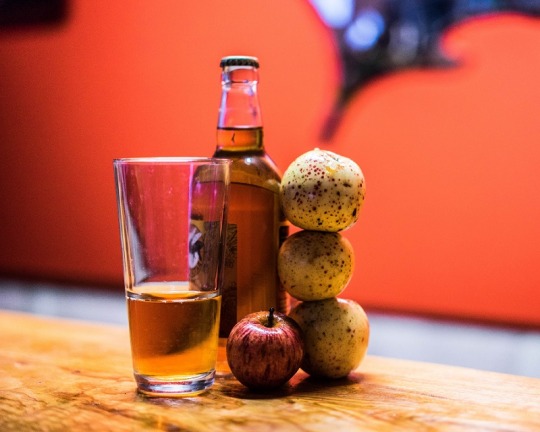
Market on the Rise: Volume and Value
The market size, measured in liters, is equally impressive. In 2024, the global cider market is estimated to be 1.63 billion liters, with forecasts predicting a rise to 2.13 billion liters by 2029, translating to a healthy CAGR of 5.37%. This surge indicates a growing consumer base thirsty for the unique taste profile of cider.
Cider Brands Leading the Charge
The cider market is a competitive landscape with a mix of established players and emerging craft producers. Here are some of the key industry participants:
Heineken N.V.: Owns leading cider brands like Strongbow and Bulmers (Europe).
C&C Group plc: Produces popular ciders such as Magners (Ireland) and Blackthorn (Ireland).
H.P. Bulmer: A household name in the UK cider market.
Asahi Group Holdings, Ltd.: Owns the popular brand Asahi Cider (Japan).
Shacksperry Cider: A leading craft cider producer in the United States.
Scrumpy Jack: A well-known cider brand in the United Kingdom.
Kopparberg: A Swedish cider brand known for its fruit-flavored ciders.
Brooklyn Cider House: A leading craft cider producer in the United States.
Westcombe Cider: A traditional English cider producer known for its dry ciders.
Regional Variations in Cider Consumption
Cider consumption varies significantly across regions. Europe is the traditional stronghold, with countries like the United Kingdom, France, and Spain leading the pack. However, North America and Asia-Pacific are emerging markets with promising growth potential.
Market Trends Shaping the Cider Landscape
Several key trends are shaping the cider market:
Premiumization: Consumers are increasingly opting for premium ciders with higher quality ingredients, unique flavor profiles, and artisanal production methods.
Fruity Flavors and Innovation: Experimentation with new fruit combinations, spices, and brewing techniques is driving innovation and attracting consumer interest.
Health and Wellness Focus: Consumers seeking perceived health benefits are drawn to ciders marketed as gluten-free, lower in calories, or made with organic ingredients.
Craft Cider Boom: The artisanal cider movement is flourishing, with consumers drawn to small-batch, locally produced ciders offering unique taste experiences.
Convenience Packaging: Cider producers are responding to consumer demand for on-the-go consumption with smaller packaging options and canned formats.
Opportunities and Challenges in the Cider Market
While the future looks bright for cider, there are challenges to navigate:
Competition from established alcoholic beverages: Cider faces stiff competition from beer, wine, and spirits for consumer spending.
Fluctuations in apple prices: Cider production heavily relies on apples, making it susceptible to price fluctuations and potential supply chain disruptions.
Regulatory landscape: Navigating complex regulations regarding alcohol content, labeling, and distribution can be challenging for cider producers.
Looking Ahead: A Toast to Innovation
The cider market presents a vibrant landscape brimming with potential. By capitalizing on consumer interest in unique flavors, artisanal production, and potentially healthier options, cider producers are well-positioned for continued growth. Innovation in packaging, marketing, and product development will be crucial for success in this dynamic market. As the cider industry ferments further, it promises to tantalize taste buds and quench the thirst of consumers worldwide.
0 notes
Text
A Brewing Niche: Exploring the Gluten-Free Beer Market in India
The Indian beer market is a booming industry, but for those with gluten sensitivity or celiac disease, traditional beers are off-limits. However, a promising niche is emerging: the gluten-free beer market in India. While still nascent, this market offers hope and refreshment for gluten-free consumers, and holds potential for significant future growth.
Market Overview:
Limited Data: Concrete market size data for gluten-free beer in India is currently scarce due to the segment's early stage. However, the global gluten-free beer market is projected to reach USD 3.2 billion by 2030, reflecting a growing trend with potential to influence India.
Rising Awareness: Increasing awareness of gluten sensitivity and celiac disease is driving demand for gluten-free alternatives across various food and beverage categories, including beer.
Growing Disposable Income: As disposable income increases in India, consumers with gluten intolerance are more likely to explore premium options like gluten-free beers.
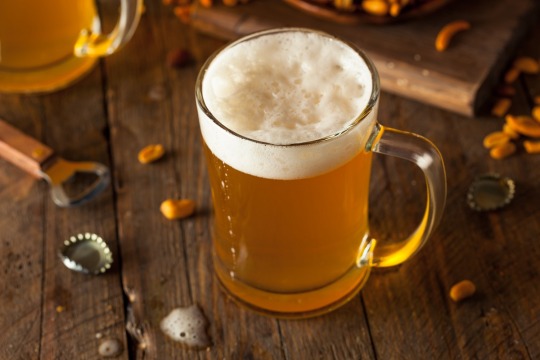
Challenges and Opportunities:
Limited Availability: Currently, gluten-free beer options in India are limited, with a few imported brands and a handful of domestic craft brewers offering gluten-free selections.
Price Point: Gluten-free beers often come at a higher price compared to regular beers, potentially limiting accessibility for some consumers.
Consumer Perception: Raising awareness about the taste and quality of gluten-free beers is crucial to overcome potential misconceptions and encourage trial among consumers.
Opportunities for Growth:
Domestic Production: Increased domestic production of gluten-free beers, potentially using alternative grains like sorghum or millet, can address availability and affordability concerns.
E-commerce Platforms: Leveraging online platforms for distribution can expand reach and convenience for gluten-free beer consumers.
Focus on Taste and Variety: Brewers can focus on creating delicious and diverse gluten-free beer styles to cater to different taste preferences.
Future Outlook:
The gluten-free beer market in India is at an initial stage but holds immense promise. As awareness and demand grow, the market is expected to witness:
Entry of New Players: More established breweries and new entrants may foray into the gluten-free beer segment, offering a wider selection for consumers.
Increased Visibility: Improved product availability in stores and restaurants, coupled with marketing efforts, can enhance consumer awareness and purchase intent.
Innovation in Brewing: Advancements in gluten-free brewing techniques and ingredient sourcing can lead to even tastier and more affordable gluten-free beers.
Conclusion:
The Indian gluten-free beer market stands at the cusp of an exciting journey. By addressing accessibility, affordability, and consumer perception, this niche segment has the potential to become a significant contributor to the overall beer market in India, offering a refreshing and flavorful option for gluten-sensitive consumers. With the right approach, gluten-free beer can truly raise a toast to inclusivity and cater to a growing segment of discerning drinkers.
Note: Due to the limited availability of market size data specific to India, the report references global market projections to provide context for the potential of the gluten-free beer market in India.
0 notes
Text
The Alcoholic Beverage Market - A Complex Landscape of Growth, Regulation, and Social Impact
Market Overview:
The global alcoholic beverage market is a complex and dynamically evolving industry, encompassing a diverse range of products enjoyed worldwide. In 2023, the market was valued at an estimated USD 1.3 trillion, and it is projected to reach USD 1.5 trillion by 2029, reflecting a steady Compound Annual Growth Rate (CAGR) of 1.4%. This growth is fueled by several key factors:
Population Expansion and Rising Disposable Income: The global population is projected to reach 9.7 billion by 2050, creating a larger potential consumer base for alcoholic beverages. Additionally, individuals in developing economies are witnessing increased disposable income, translating into higher spending on leisure activities, including alcoholic beverage consumption.
Shifting Consumer Preferences: Consumers are increasingly drawn to premiumization, seeking out unique and high-quality beverages. This trend is evident in the surging popularity of craft beers, with the global craft beer market alone reaching USD 37.2 billion in 2023 and expected to grow at a CAGR of 8.2% from 2024 to 2030. Similarly, artisanal spirits are witnessing significant growth, driven by a consumer desire for premium and aged expressions.
Emerging Markets Hold Potential: Developing markets like China, India, and Brazil are witnessing significant expansion in the alcoholic beverage industry, driven by factors like urbanization, rising disposable income, and a growing middle class. For instance, China's alcoholic beverage market is estimated to be the second-largest globally, valued at USD 264.3 billion in 2023.
Evolving Distribution Landscape: The rise of e-commerce platforms is transforming the way alcoholic beverages are purchased and delivered, offering a convenient alternative to traditional retail channels. Additionally, the on-premise consumption segment, encompassing restaurants, bars, and nightclubs, is expected to rebound as pandemic restrictions ease, contributing further to market growth.

Market Segmentation:
The alcoholic beverage market can be segmented by various factors:
Product Type:
Beer: The largest segment by volume, accounting for over half of the global market share. In 2023, the global beer market was valued at USD 735.8 billion.
Wine: A diverse category offering various styles and price points. The global wine market was valued at USD 398.4 billion in 2023, with red wine accounting for the largest share.
Spirits: A segment witnessing premiumization, with consumers opting for high-quality and aged spirits. The global spirits market was valued at USD 195.8 billion in 2023.
Region:
Asia Pacific: Projected to be the fastest-growing region, with a CAGR of 2.1% from 2024 to 2029, driven by economic growth and rising disposable income.
North America: A mature market with established brands, experiencing steady growth with a projected CAGR of 0.8% from 2024 to 2029.
Europe: A significant market with a long history of wine and beer consumption, with a projected CAGR of 0.7% from 2024 to 2029.
Latin America: A growing market with strong cultural ties to alcoholic beverages, with a projected CAGR of 1.7% from 2024 to 2029.
Distribution Channel:
On-premise: Consumption of beverages in restaurants, bars, and nightclubs, accounting for approximately 35% of the global market.
Off-premise: Purchase of beverages from retail stores for at-home consumption, accounting for approximately 65% of the global market.
Challenges and Opportunities:
While the market exhibits growth potential, several challenges need to be addressed:
Regulatory Landscape: Stringent regulations regarding age verification, marketing restrictions, and taxation can impact profitability and market access for certain players. Additionally, restrictions on advertising and branding can pose challenges for new entrants and innovative products.
Shifting Consumer Behavior: Health concerns and changing social norms are influencing consumer preferences, leading to a rise in demand for low- and no-alcohol options.
0 notes
Text
Exploring the Dynamics of the Cooking Oil Market
In the ever-evolving realm of culinary delights, the Cooking Oil Market stands as a central player, shaping both traditional and modern kitchens around the globe. From sizzling pans to salad dressings, cooking oils play a pivotal role in our daily culinary adventures. This article delves into the diverse facets of the Cooking Oil Market, exploring key segments like Edible Oils, Used Cooking Oils, and the burgeoning Organic Edible Oil Market.
Cooking Oil Market Overview
The Cooking Oil Market is a dynamic landscape influenced by an array of factors, including changing dietary preferences, health considerations, and the pursuit of sustainable cooking practices. Edible oils, the cornerstone of this market, come in various forms, each offering a unique flavor profile and nutritional benefits. Today, the Cooking Oil Market, valued at a staggering USD 68.9 billion, demonstrates remarkable diversity and growth, driven by various factors and innovations.
Edible Oil Market: A Symphony of Flavors
Edible oils, ranging from the golden hues of sunflower oil to the rich tones of olive oil, form the heart of the Cooking Oil Market. They cater to diverse tastes and cooking styles worldwide. Sunflower oil, soybean oil, palm oil, canola oil, and olive oil are among the prominent players in this segment. Each oil type brings its distinctive attributes, influencing both the taste and nutritional value of culinary creations. Edible oils market is expected to reach USD 190.88 billion by 2030, which is USD 102.37 billion in 2022, registering a CAGR of 8.10% during the forecast period of 2023 to 2030.

Used Cooking Oil Market: Sustainable Transformation
As environmental consciousness takes center stage, the Used Cooking Oil (UCO) Market emerges as a key player in sustainable culinary practices. UCO, often recycled from restaurant kitchens, undergoes processes to transform it into biodiesel, contributing to reduced waste and a greener environment. The market for UCO intertwines environmental responsibility with economic viability, presenting a win-win scenario for both businesses and the planet. The global used cooking oil market is projected to grow from $5.97 billion in 2021 to $10.08 billion in 2028 at a CAGR of 7.76% in forecast period, 2021-2028.
Organic Edible Oil Market: A Healthier Choice
In the pursuit of healthier living, consumers are increasingly turning to the Organic Edible Oil Market. This segment offers oils produced from organically grown crops, free from synthetic pesticides and fertilizers. The emphasis on natural cultivation methods aligns with the growing preference for clean and organic ingredients, making organic edible oils a sought-after choice among health-conscious individuals. The global organic edible oil market size is projected to grow from $3.12 billion in 2023 to $5.79 billion by 2030, at a CAGR of 9.23% during the forecast period.
Market Dynamics and Trends
The Cooking Oil Industry is not only shaped by consumer preferences but also by broader industry trends. With health and wellness at the forefront, there is a noticeable shift toward oils perceived as heart-healthy, such as olive oil. Additionally, the market witnesses a surge in demand for cooking oils that support specific dietary preferences, such as plant-based or keto-friendly options.
Sustainability in Focus
Sustainability emerges as a defining theme in the Cooking Oil Market. Brands are increasingly adopting eco-friendly packaging, promoting responsible sourcing practices, and investing in initiatives to reduce their environmental footprint. Consumers, too, are aligning their choices with brands that prioritize sustainability and ethical business practices.
Global Perspectives
The global nature of the Cooking Oil Market allows for a rich tapestry of flavors and culinary traditions. Olive oil, a staple in Mediterranean cuisine, coexists with palm oil, prevalent in Southeast Asian dishes. The market's diversity reflects the interconnectedness of culinary cultures and the adaptability of cooking oils to various regional preferences.
Future Outlook
As the Cooking Oil Market continues to evolve, the future promises innovations in product offerings, packaging, and sustainability practices. The industry is likely to witness the rise of niche oils, catering to specific cuisines or dietary requirements. Additionally, advancements in technology may further enhance production processes, ensuring a balance between culinary enjoyment and health-conscious choices.
In conclusion, the Cooking Oil Market remains a vibrant and integral part of the global food landscape. From traditional favorites to emerging trends, cooking oils play a multifaceted role, adding both flavor and substance to our culinary experiences. As consumers navigate a sea of choices, the market responds with diversity, sustainability, and a commitment to meeting the ever-changing demands of kitchens worldwide.
0 notes
Text
IMFL Market Analysis, Growth and Key Players
The Indian Made Foreign Liquor (IMFL) Market is a dynamic and integral part of India's alcoholic beverage industry. This segment encompasses a diverse range of spirits produced domestically, drawing inspiration from foreign distillation techniques and recipes. The IMFL Market has witnessed substantial growth in recent years, fueled by changing consumer preferences, rising disposable incomes, and an expanding urban population. Let's delve into the key aspects of the IMFL Market, exploring its prominent companies and the factors driving its growth.
Overview of the IMFL Market:
The IMFL Market includes various types of liquors such as whiskey, rum, brandy, vodka, and gin. These beverages are crafted within India, incorporating both indigenous and foreign influences to create distinctive flavor profiles. Unlike country liquor, which is typically produced and consumed locally, IMFL represents a more sophisticated and diverse category catering to a broad consumer base.
IMFL in Focus: Indian Made Foreign Liquor
Within the Spirits Market, IMFL refers to a category of liquors produced in India but influenced by foreign distillation methods. This segment includes various types of spirits, each with its own characteristics:
Whiskey: Known for its diverse styles, including single malt, blended, and grain whiskey, offering a range of flavors from smoky to sweet.
Rum: Embracing sweetness and often featuring spiced variations, Indian rum brings its own flair to the global rum scene.
Brandy: Crafted from fermented fruit juices, Indian brandy offers a fruity and often smoother alternative to its international counterparts.
Vodka: Prized for its neutrality, Indian vodka is versatile and serves as a base for a wide range of cocktails.
Gin: Exhibiting herbal and botanical notes, Indian gin has gained popularity as consumers explore craft and artisanal options.
Key Players in the IMFL Market
Several companies play a pivotal role in shaping the IMFL segment and contributing to the overall growth of the Spirits Market:
United Spirits Limited (USL): As one of the largest spirits companies in India, USL boasts an extensive portfolio that includes iconic brands like McDowell's No. 1, Royal Challenge, and Signature.
Radico Khaitan Limited: Known for its flagship brand, Rampur Indian Single Malt Whisky, Radico Khaitan has made a mark in the premium spirits segment.
Diageo India: A subsidiary of the global beverage giant Diageo, Diageo India has a strong presence with brands like Johnnie Walker, Black & White, and VAT 69.
Sazerac Company: While based in the United States, Sazerac has made significant inroads into the Indian market with its acquisition of Radico Khaitan's stake in their joint venture.
Factors Driving Growth in the IMFL Market:
Changing Consumer Preferences: The evolving tastes and preferences of consumers, especially among the younger demographic, are driving the demand for diverse and premium IMFL products.
Rising Disposable Incomes: Increasing disposable incomes, particularly in urban areas, enable consumers to explore and invest in higher-priced and premium IMFL offerings.
Marketing and Innovation: Intensive marketing strategies and innovative product launches by key players contribute to the overall growth of the IMFL Market. Brands often engage in promotional activities and introduce new variants to capture consumer attention.
Urbanization and Lifestyle Changes: The urbanization trend, coupled with changing lifestyles, has led to a shift in drinking patterns. Consumers are seeking more sophisticated and curated drinking experiences, contributing to the popularity of IMFL products.
Challenges and Future Outlook:
While the IMFL Industry continues to thrive, it faces challenges such as regulatory constraints, changing government policies, and increasing health consciousness among consumers. However, with a focus on innovation, responsible marketing, and catering to evolving consumer preferences, the IMFL Market is poised for sustained growth.
In conclusion, the IMFL Market in India is a vibrant and evolving landscape, with leading companies shaping the industry's trajectory. As consumers embrace diverse and premium choices, the IMFL segment remains a key player in the country's dynamic alcoholic beverage market.
0 notes
Text
Raising a Glass to Evolution: Uncorking the Dynamic Cider Market
Cider, the fermented beverage born from apples, has transcended its rustic roots to become a global phenomenon. From crisp and refreshing styles to complex and sophisticated expressions, the Cider Market is experiencing a renaissance, driven by consumer curiosity and innovative producers. Let's embark on a journey to explore this bubbly world, delving into its segments, key players, and exciting trends:
Cider Market: A Growing Thirst for Variety
With a projected CAGR of 5.1%, the global Cider Market is expected to reach USD 6.72 billion by 2030, fueled by:
Rising disposable incomes: Consumers are seeking premium experiences and exploring diverse beverage options.
Increased focus on natural and artisanal products: Cider aligns with this trend, offering a perceived healthier and authentic alternative.
Growing popularity of fruit-flavored beverages: Cider caters to this demand with a wide range of flavor profiles.
Apple Cider: Unveiling the Core
Apple Cider, the traditional cider variety, remains a significant segment. It encompasses dry, semi-dry, and sweet styles, enjoyed for their refreshingly tart and apple-forward notes. This segment sees growth in premium offerings with unique apple varieties and aging techniques.

Craft Cider Market: Where Innovation Ferments
Craft Cider is at the heart of the market's dynamism. Small-batch producers are experimenting with unique ingredients, aging methods, and barrel-fermentation, creating distinctive and flavorful ciders. This segment attracts adventurous consumers seeking new taste experiences.
Ice Cider: A Canadian Gem Goes Global
Ice Cider, a Canadian specialty, is gaining international recognition. Made from apples concentrated by freezing, it boasts intense sweetness, balanced acidity, and complex ice wine-like characteristics. This niche market exhibits significant growth potential due to its unique appeal.
Cider Market Top Players: Leading the Charge
Several industry leaders are shaping the Cider Market:
Heineken N.V.: Owns Strongbow, a leading global cider brand known for its mass-market appeal.
C&C Group plc: Boasts Magners, a popular Irish cider brand with widespread international distribution.
Groupe Lactalis: Offers the French cider brand Pommeau, recognized for its premium quality and traditional methods.
Seattle Cider Company: A leading American craft cider producer known for its innovative and award-winning ciders.
Etienne Dupont: A pioneer in Canadian Ice Cider, producing internationally acclaimed expressions.
Trends Shaping the Future: What's Next for Cider?
As the Cider Market matures, several key trends are emerging:
Premiumization: Consumers are seeking high-quality ciders with unique flavor profiles and premium ingredients.
Fruity Explorations: Experimentation with exotic fruits and flavor combinations is expanding cider's reach.
Focus on Sustainability: Eco-conscious consumers are driving demand for sustainably produced and packaged ciders.
Evolving Distribution Channels: Online sales and direct-to-consumer models are gaining traction, offering wider options and convenience.
Blurring Boundaries: Collaborations between cideries and breweries are creating exciting new hybrid beverages.
Conclusion: From Humble Beginnings to a Booming Industry
The Cider Market is experiencing a vibrant transformation. With its diverse offerings, innovative producers, and evolving trends, cider is captivating a wider audience and carving its niche in the global beverage landscape. So, the next time you gather with friends, consider raising a glass of cider – a delightful beverage with a promising future.
0 notes
Text
Crafting Flavorful Moments: Unveiling the Dynamic Cider Market
The Cider Market, a beverage landscape once overshadowed by traditional choices, has undergone a remarkable transformation, becoming a favorite among beverage enthusiasts. Within this vibrant market, variations such as Apple Cider, Beer Cider, and the artisanal delights of Craft Cider have emerged, shaping a diverse and evolving industry.
1. Cider Market: A Palate of Refreshing Choices:-
The Cider Market stands as a testament to the evolving preferences of consumers seeking a refreshing alternative to traditional beverages. Originating from fermented apple juice, cider encompasses a broad range of styles and flavors, catering to a diverse audience with varying taste preferences.
The global Cider Market boasts a refreshing valuation of US$5 billion in 2023, projected to reach a juicy US$6.72 billion by 2030. This translates to a steady CAGR of 3.34%, indicating a sustained growth fueled by several factors:
Rising Popularity of Craft Beverages: Consumers are increasingly seeking out artisanal and locally produced drinks, driving demand for craft ciders with unique flavor profiles and ingredients.
Healthier Image: With lower alcohol content and often perceived as containing more antioxidants than beer, cider appeals to health-conscious consumers.
Flavorful Innovation: Experimentation with fruits, spices, and aging techniques leads to a wider range of cider options, catering to diverse preferences.
Urbanization and Convenience: On-the-go lifestyles favor readily available and easy-to-drink beverages, boosting cider's appeal.

2. Apple Cider Market: Nostalgia Infused with Modern Flair:-
Apple Cider, a timeless favorite, represents a quintessential expression of the Cider Market. Crafted from fermented apple juice, this variant retains the crisp, orchard-fresh taste of apples, providing a nostalgic and invigorating beverage experience. Estimated at US$3.8 billion in 2023, this classic segment includes traditional sweet and hard ciders, enjoying sustained popularity and attracting new innovations.
3. Beer Cider Market: Fusion of Two Worlds:-
The Beer Cider Market introduces a delightful fusion, combining the effervescence of beer with the fruity essence of cider. This variant appeals to consumers seeking a harmonious blend of malt complexity and the natural sweetness of fermented apple juice.
Bridging Beverage Traditions:-
Beer ciders bridge the gap between beer and traditional ciders, offering a unique taste profile that caters to those with a penchant for both beverage categories. This fusion exemplifies the market's ability to innovate and create novel drinking experiences.
4. Craft Cider Market: Artistry in Every Sip:-
Craft Cider, celebrated for its artisanal production and commitment to quality, stands as a distinctive segment within the Cider Market. Craft producers prioritize small-batch, handcrafted methods to deliver unique and flavorful cider offerings. Reaching US$600 million in 2023, this segment is brimming with independent producers experimenting with unique ingredients, fermentation techniques, and aging processes.
Market Dynamics and Future Trends:-
The Cider Market's dynamics are shaped by consumer preferences, innovations in production methods, and an increased focus on sustainability. Future trends may include the rise of low-alcohol and non-alcoholic cider options, flavor experimentation, and the incorporation of unique regional apple varieties.
Challenges and Opportunities:-
Challenges within the Cider Industry involve addressing seasonality concerns, navigating regulatory landscapes, and ensuring consistent quality. Opportunities lie in collaborative efforts between cider producers and apple orchards, expanding market reach through innovative marketing, and capitalizing on the growing demand for premium and artisanal beverages.
Conclusion:-
In conclusion, the Cider Market stands as a vibrant and evolving landscape, offering a diverse array of choices for consumers with varying palates. From the classic allure of Apple Cider to the hybrid appeal of the Beer Cider Market and the artisanal craftsmanship of the Craft Cider market, each segment contributes to the rich and dynamic tapestry of the cider industry. As consumer preferences continue to shape the market, the future holds the promise of even more innovative and delightful offerings in the world of cider.
0 notes
Text
Unpacking the Size, Trends, and Key Players of the Ready-to-Eat Food Market
The Ready-to-Eat Market, a culinary frontier designed for convenience, stands as a testament to the changing dynamics of modern lifestyles. With a keen focus on revenue, growth, key players, and market size, this exploration navigates through the flavoursome landscape of ready-to-eat offerings, revealing the ingredients that contribute to its robust presence in the global food industry.
1. Ready to Eat Market Growth: A Culinary Odyssey Unfolding:-
Overview: The growth trajectory of the Ready-to-Eat Market resembles a captivating culinary odyssey. As consumers increasingly gravitate towards convenient dining options, the market expands its horizons, offering an extensive array of ready-to-eat meals that span various cuisines, tastes, and dietary preferences.
Driving Forces Behind Market Expansion: The Ready-to-Eat Market growth is propelled by a confluence of factors. Rapid urbanization, changing consumer behavior, and the quest for quick, yet satisfying, meal solutions are the driving forces. This expansion is also fueled by the market's ability to embrace emerging food trends, catering to the adventurous spirit of contemporary food enthusiasts.

2. Ready to Eat Market Players: Orchestrating Culinary Symphonies:-
Overview: In the realm of the Ready-to-Eat Market, a varied ensemble of players choreographs the culinary symphonies that delight dining tables globally. Ranging from established food conglomerates to agile startups, these Ready-to-Eat Market Players not only infuse vibrancy and innovation but also play a pivotal role in shaping the landscape of convenient dining choices.
Leading the charge in this culinary race are several industry giants:-
Nestlé: A global leader, offering well-known brands like Lean Cuisine, Hot Pockets, and Maggi.
PepsiCo: Boasting Frito-Lay and Quaker Oats brands, PepsiCo focuses on snacks and convenient breakfast options.
Kraft Heinz: Renowned for its iconic brands like Mac & Cheese and Velveeta, Kraft Heinz caters to quick and familiar meals.
Unilever: Focusing on healthier offerings, Unilever owns brands like Hellmann's mayonnaise and Bertolli olive oil.
Marico: An Indian giant, Marico is known for its Saffola cooking oil and ready-to-eat meals.
Regional Champions:
Marico: An Indian giant, Marico is known for its Saffola cooking oil and ready-to-eat meals, capturing the hearts of the Asian market.
CP Group: This Thai conglomerate dominates the Southeast Asian market with brands like CP Pokphand, offering meat products and processed food across the region.
General Mills: While a global player, General Mills holds strong in North America with its iconic brands like Pillsbury, Betty Crocker, and Cheerios, catering to breakfast and baking needs.
3. Ready to Eat Market Size: Gauging Culinary Influence on a Global Scale:-
Overview: The Ready-to-Eat Market size reflects its widespread influence on the global culinary stage. With a substantial market footprint, the availability of ready-to-eat options transcends geographical boundaries, offering consumers an extensive selection of meals that align with their preferences and cultural backgrounds. The global RTE market boasts a hefty US$980.9 billion valuation in 2023, projected to reach a staggering US$1.248 trillion by 2028. This translates to a CAGR of 4.1%, a steady and sustained growth fueled by several factors:
Urbanization and Busy Lifestyles: As more people flock to cities and juggle hectic schedules, convenient food options become a necessity.
Rising Disposable Incomes: Growing wealth in developing economies translates to increased spending on processed and convenient food products.
Changing Family Dynamics: Smaller families and dual-income households often seek time-saving meal solutions.
Technological Advancements: Improved packaging, extended shelf life, and innovative processing techniques enhance the quality and variety of RTE options.
Market Dynamics and Future Trends:-
The Ready-to-Eat Market's dynamics are shaped by an ongoing dialogue between consumer preferences and industry innovations. As technology integrates with culinary expertise, the market is poised for further evolution, with trends such as plant-based options, gourmet convenience, and sustainable packaging gaining prominence.
Challenges and Opportunities:-
Challenges within the Ready-to-Eat Industry include addressing nutritional concerns, managing the balance between convenience and freshness, and navigating regulatory landscapes. Opportunities for growth lie in catering to health-conscious consumers, expanding product portfolios, and leveraging digital platforms to enhance consumer engagement.
Conclusion:-
In conclusion, the Ready-to-Eat Market emerges as a culinary maestro, harmonizing convenience, flavor, and innovation. With a robust revenue foundation, steady growth, influential players, and a substantial market size, it continues to redefine how the world approaches dining. As consumer preferences evolve and culinary landscapes shift, the Ready-to-Eat Market remains at the forefront, ensuring that the global table is always set for a convenient and delightful feast.
0 notes
Text
Wine Market is poised to reach USD 456.76 billion by 2028
The Wine Market, a captivating tapestry of flavors and traditions, stands as a global beacon in the world of beverages. As we uncork the intricacies of this market, we also explore the nuanced realms of the RUM, Tequila, Whiskey, and Sparkling Red Wine markets, each contributing its distinctive notes to the symphony of alcoholic beverages. The global Wine Market was valued at $339.53 billion in 2020 and is expected to reach $456.76 billion by 2028. This translates to a CAGR of 4.30%, indicating a steady and promising growth trajectory fueled by several factors:
Rising Disposable Incomes: Increased spending power translates to greater exploration of premium wines and diverse varieties.
Millennial and Gen Z Appeal: Younger generations are embracing wine, drawn to its social appeal, cultural associations, and diverse flavor profiles.
Evolving Palates: Consumers are venturing beyond traditional favorites, seeking unique grape varietals, blends, and regional specialties.
Growing Awareness of Health Benefits: Moderate wine consumption, particularly red wine, is associated with potential health benefits, further driving market growth.
1. RUM Market: Caribbean Spirit and Global Appeal:-
The RUM Market, born from the sugarcane fields of the Caribbean, has evolved into a global sensation. With its roots deeply embedded in tropical landscapes, RUM captivates enthusiasts with a spectrum of flavors, from light and crisp to dark and complex. Rum market size was estimated at USD 11.77 billion in 2022 and is expected to reach USD 12.32 billion in 2023.

2. Tequila Market: From Agave Fields to Global Palates:-
The Tequila Market, synonymous with the arid landscapes of Mexico, has transcended its regional origins to become a global favorite. Distilled from the blue agave plant, Tequila showcases a spectrum of expressions, from silver to añejo. Tequila market size was valued at USD 5636.87 million in 2022 and is expected to expand at a CAGR of 5.89% during the forecast period, reaching USD 7944.53 million by 2028.
3. Whiskey Market: A Symphony of Barley and Barrels:-
The Whiskey Market, with its roots in centuries-old distilling traditions, has evolved into a global phenomenon. From the peaty landscapes of Islay to the smooth bourbons of Kentucky, whiskey embodies craftsmanship, tradition, and regional character. Whiskey market size was valued at USD 62 billion in 2022 and is projected to reach USD 101.10 billion by 2031, with a CAGR of 5.58% during the forecast period 2023–2031. The consumption of whiskey cannot only be attributed to prestige and honor, but it also has several health benefits.
4. Sparkling Red Wine Market: Effervescence Meets Richness:-
The Sparkling Red Wine Market combines the effervescence of bubbles with the richness of red grapes. This unique segment caters to those seeking a vibrant and celebratory experience, challenging the traditional notions of sparkling wines. Sparkling Red Wine Market size is expected to grow from USD 45300 Million in 2023 to USD 60700 Million by 2030, at a CAGR of 4.30% during the forecast period (2023-2030). The Sparkling Red Wine market is a dynamic and evolving segment of the global wine industry.
Market Dynamics and Consumer Trends:-
The dynamics of these markets are influenced by shifting consumer preferences, sustainability considerations, and the exploration of new taste experiences. While traditional favorites hold their ground, there is a growing appetite for artisanal, craft, and unique expressions.
Challenges and Opportunities:-
Challenges in these markets include climate-related impacts on grape cultivation, evolving regulations, and the need for sustainable practices. Opportunities for growth lie in embracing technological advancements, meeting the rising demand for premium and craft offerings, and adapting to changing consumer tastes.
Conclusion:-
In conclusion, the diverse landscapes of the Wine, RUM, Tequila, Whiskey, and Sparkling Red Wine markets reflect the global tapestry of beverage culture. From the time-honored traditions of winemaking to the adventurous innovations in spirits, each market contributes to the rich and ever-evolving world of alcoholic beverages. As consumers continue to explore, savor, and appreciate the artistry behind every bottle, these markets remain at the forefront of the global beverage renaissance.
#food#beverage#alcoholic#business#market research#news#whiskey market#rum market#Tequila market#Sparkling Red Wine Market
0 notes
Text
Savoring the Essence of the Cider Market: A Delectable Journey through Size, Revenue, and Growth
The Cider Market, a delightful realm where apple orchards meet artisanal craftsmanship, has witnessed a renaissance in recent years, captivating the palates of consumers seeking unique and flavorful beverage experiences. In this exploration, we delve into the size, revenue, and growth dynamics that define this effervescent market.
Overview of the Cider Market:-
The Cider Market is a flourishing segment within the beverage industry, characterized by the production of cider – a fermented beverage crafted primarily from apples. Beyond traditional apple cider, the market embraces a spectrum of variations, including pear ciders and innovative blends, offering a diverse range of flavors to consumers.
Market Dynamics:-
The dynamics of the Cider Market are shaped by a combination of tradition, innovation, and consumer preferences. Craft cider makers, large-scale producers, and orchard-based operations contribute to the vibrant tapestry of this market, providing consumers with an array of choices.
Market Size:-
The global Cider Market boasts a juicy US$15.63 billion valuation in 2022, a figure set to swell to a vibrant US$22.91 billion by 2028. This translates to a tantalizing CAGR of 5.1%, indicating a steady and sustained growth trajectory.

Key Components of the Cider Market:-
Traditional Apple Ciders: The backbone of the market, traditional apple ciders maintain a strong presence, capturing the essence of freshly pressed apples with a blend of sweet and tart notes.
Craft and Artisanal Ciders: Craft and artisanal ciders have gained prominence, offering unique flavors, limited editions, and a focus on quality ingredients. These ciders often highlight regional variations and specialized production methods.
Flavored and Blended Ciders: The market has seen an influx of flavored and blended ciders, incorporating ingredients such as berries, spices, and even hops. These innovations appeal to a diverse consumer base seeking adventurous taste experiences.
Pear and Fruit-Based Ciders: Beyond apples, pear ciders and ciders made from various fruits contribute to the market's diversity, appealing to those who appreciate nuanced and refreshing alternatives.
Market Revenue and Growth:-
The Cider Market exhibits not only a sizeable revenue stream but also a trajectory of consistent growth. Factors contributing to this growth include the market's ability to adapt to evolving consumer preferences, the rising popularity of craft beverages, and the positioning of cider as a versatile and sociable drink.
Factors Influencing Growth:-
Rising Consumer Interest in Craft Beverages: The surge in consumer interest in craft and artisanal beverages has provided an ideal environment for the growth of the Cider Market. Craft cider makers often focus on quality, authenticity, and unique flavor profiles.
Health and Wellness Trends: As health-conscious consumers seek alternatives to traditional alcoholic beverages, cider, with its natural and fruit-based origins, aligns with prevailing health and wellness trends, contributing to its sustained growth.
Diverse Flavor Innovations: The market's embrace of diverse flavor innovations, including botanical infusions and experimental blends, caters to a broad audience with varied taste preferences, expanding the consumer base.
Marketing and Branding Strategies: Effective marketing and branding strategies play a role in the market's growth. Cider producers often highlight the craftsmanship, heritage, and natural ingredients associated with their products, creating a compelling narrative for consumers.
Challenges and Opportunities:-
While the Cider Market basks in growth, it encounters challenges related to market saturation, competition, and the need to educate consumers about the diverse offerings. Opportunities lie in continued innovation, sustainability practices, and the exploration of emerging markets.
Conclusion:-
In conclusion, the Cider Market stands as a testament to the fusion of tradition and innovation, offering consumers a refreshing and diverse range of beverage options. As the market continues to grow in size and revenue, it mirrors the evolving tastes and preferences of consumers seeking distinctive and enjoyable drinking experiences.
0 notes
Text
Unveiling the Spectrum: Exploring the Dynamics of the Global Beer Market
In the dynamic landscape of the global beverage industry, the beer market stands out as a thriving sector, continually evolving to meet changing consumer preferences and market trends. As we delve into the intricacies of the beer market, exploring its various facets, from industry giants to emerging niches, we uncover a world of innovation and strategic positioning.
Beer Market Overview:-
The beer market, a significant player in the broader alcohol industry, has witnessed substantial growth and diversification over the years. With a rich history deeply embedded in cultural and social contexts, beer has transcended borders, becoming a global phenomenon.
Beer Industry Dynamics:-
At the core of the beer market are the diverse players that constitute the beer industry. From traditional breweries with centuries-old legacies to dynamic craft beer enterprises, the industry is a melting pot of innovation and tradition. The competition is fierce, driving companies to continually adapt to changing consumer preferences and market dynamics.
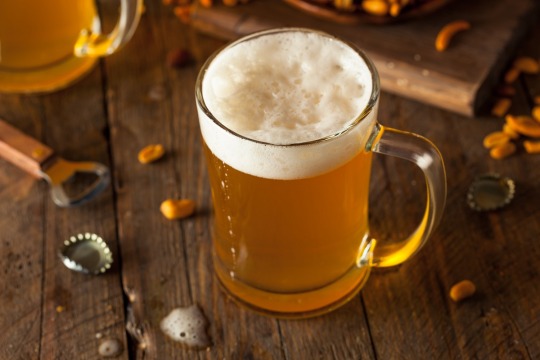
Top Beer Companies in the World:-
Leading the charge in the global beer market are powerhouse companies that have mastered the art of brewing and branding. Giants like Anheuser-Busch InBev, Heineken, and China Resources Snow Breweries dominate the industry, shaping trends and setting benchmarks for others to follow.
Alcohol-Free Beer Market:-
A notable trend reshaping the beer market is the rising popularity of alcohol-free beer. With an increasing focus on health and wellness, consumers are seeking alternatives that allow them to enjoy the refreshing taste of beer without the effects of alcohol. The alcohol-free beer market is experiencing significant growth, with companies innovating to meet this demand.
Beer Market Research Reports:-
Navigating the complexities of the beer market requires access to comprehensive and reliable information. Beer market research reports play a pivotal role in providing industry stakeholders, from brewers to investors, with crucial insights. These reports analyze market trends, consumer behavior, and competitive landscapes, aiding strategic decision-making.
Non-Alcoholic Beer Market:-
Within the broader spectrum of alcohol-free beverages, the non-alcoholic beer market has carved a niche for itself. As consumers seek alternatives that align with health-conscious lifestyles, non-alcoholic beer provides a compelling option. Breweries are investing in developing high-quality, flavorful non-alcoholic options to cater to this growing demand.
Black Beer Market:-
Diversity in beer extends beyond alcohol content to include variations in flavor and color. The black beer market, characterized by rich, dark brews, has gained a devoted following. Craft breweries and established companies alike are experimenting with unique recipes to captivate the palates of consumers who appreciate the boldness of black beers.
In conclusion, the beer market is a dynamic and multifaceted industry that continues to captivate a global audience. From the dominance of major players to the emergence of innovative segments like alcohol-free and black beer, the market is a testament to the adaptability and creativity of brewers worldwide. As we navigate this ever-evolving landscape, staying informed through beer market research reports becomes paramount, ensuring that industry stakeholders are well-equipped to thrive in an environment where change is the only constant.
0 notes
Text
The Vintage Resurgence: Navigating the Dynamic Landscape of the Global Wine Market
In the vast universe of alcoholic beverages, the wine market stands as a testament to age-old traditions, evolving tastes, and dynamic market forces. As consumers worldwide develop a more refined palate and seek unique drinking experiences, the wine market's growth trajectory is both fascinating and intricate. This exploration delves into the nuances of the wine market, its size, share, and the broader alcoholic beverage landscape.
Understanding the Wine Market Landscape
The wine market, characterized by its diverse offerings and regional specialties, has seen remarkable growth over the past decade. With consumers increasingly gravitating towards premium and artisanal products, the market size has expanded significantly. According to recent industry reports, the global wine market size is projected to reach unprecedented figures in the coming years, driven by factors like increasing disposable incomes, urbanization, and a burgeoning wine culture in emerging economies.

Decoding Wine Market Share and Dynamics
While the overall wine market is burgeoning, the dynamics within are intricate. Different wine varieties and categories, from reds to whites and sparkling to fortified, compete for consumer attention. Varietals like Tequila and Whiskey have carved their niches, commanding substantial market shares within the broader alcoholic beverage spectrum.
The Tequila market, for instance, has witnessed a surge in demand, especially in North America, driven by innovative marketing campaigns, celebrity endorsements, and a growing appreciation for craft cocktails. Similarly, the Whiskey market, with its rich heritage and diverse offerings from around the world, continues to captivate enthusiasts, contributing significantly to the overall wine and spirits landscape.
Emerging Trends: Dry White Wine and Sparkling Red Wine Markets
Within the wine category, specific segments are experiencing heightened demand, reflecting evolving consumer preferences. The Dry White Wine market, characterized by its crisp flavors and food-friendly profile, has seen a steady uptick in consumption, particularly in regions with warmer climates. The market's growth can be attributed to its versatility, making it a favorite for both casual drinkers and connoisseurs alike.
On the other end of the spectrum, the Sparkling Red Wine market presents a captivating blend of tradition and innovation. Combining the richness of red wine with the effervescence of sparkling varieties, these wines offer a unique sensory experience. As consumers seek novel drinking experiences, Sparkling Red Wines have emerged as a preferred choice for celebrations, fine dining, and casual indulgences.
Future Prospects and Concluding Insights
The wine industry, with its multifaceted offerings and dynamic consumer base, presents vast opportunities and challenges. As global economic landscapes evolve, and consumer preferences shift, adaptability and innovation will be key to sustaining growth.
In conclusion, the wine market's journey is a testament to the beverage industry's resilience and adaptability. As it continues to evolve, driven by emerging trends and consumer dynamics, one thing remains certain: the timeless allure of wine, with its myriad varieties and flavors, will continue to captivate hearts, minds, and palates across the globe.
0 notes
Text
Embarking on a Spirited Journey: Unveiling the Dynamics of the Alcoholic Beverages Market: Ken Research
The world of libations, the Alcoholic Beverages Market, is a dynamic and multifaceted realm that weaves together tradition, innovation, and ever-evolving consumer preferences. This in-depth exploration delves into the intricacies of the market, unraveling its growth trajectory, revenue dynamics, the prominence of Scotch Whisky, key players, suppliers, and the prevailing trends that paint its landscape.
Growth Trajectory:-
The Alcoholic Beverages Market is akin to a spirited odyssey, guided by the diverse tastes of consumers and the relentless pursuit of quality. As global economies thrive and disposable incomes rise, consumers find themselves exploring premium and artisanal offerings. This exploration, fueled by a desire for unique experiences, injects vitality into the market, shaping its growth trajectory.
Scotch Whisky's Distinctive Presence:-
Amidst the varied offerings in the Alcoholic Beverages Market, Scotch Whisky stands tall as an embodiment of craftsmanship and tradition. Its rich heritage, meticulous distillation process, and diverse expressions make it a revered category. Scotch Whisky market is a fusion of tradition and innovation, with distillers introducing novel expressions to cater to an evolving global palate.

Economic Significance:-
The Alcoholic Beverages Market is not merely a conduit for intoxication; it is an economic powerhouse. Boasting substantial revenue and market size, it is a reflection of the global cultural tapestry. From mainstream giants to niche players, the market accommodates a spectrum of brands, each contributing to its economic significance and showcasing its adaptability.
Key Manufacturers and Suppliers:-
Driving the wheels of the Alcoholic Beverages Market are key manufacturers who dictate trends and standards. Their influence extends beyond products to shaping consumer choices. Simultaneously, suppliers form the backbone of a seamless supply chain, ensuring a continuous flow of diverse products to satiate consumer demands and maintain market vibrancy.
Market Trends:-
To navigate the currents of the Alcoholic Beverages Market, understanding prevailing trends is paramount. The surge in demand for low-alcohol and alcohol-free alternatives signals a shift towards health-conscious consumption. Sustainable practices and eco-friendly packaging have emerged as significant trends, aligning with global efforts towards environmental responsibility.
Consumer Dynamics:-
Consumers, the heartbeat of the Alcoholic Beverages Market, play a pivotal role in steering its course. Their adventurous spirit, penchant for exploration, and evolving preferences set the stage for product innovation. Craft breweries, boutique wineries, and artisanal distilleries find success by catering to the discerning tastes of consumers seeking unique experiences.
Global Market Dynamics:-
The Alcoholic Beverages Market is a global stage where regions like North America, Europe, Asia-Pacific, and beyond contribute to its vibrant tapestry. Each region brings its unique flavors, preferences, and drinking cultures, creating a mosaic of diverse libations that collectively define the market's global dynamics.
Conclusion:-
In conclusion, the Alcoholic Beverages Market is more than a marketplace; it is an ongoing narrative of celebration, tradition, and innovation. From the complex depths of Scotch Whisky to the effervescence of craft beers, every sip is a testament to the market's rich tapestry. As consumers embark on an intoxicating journey, the Alcoholic Beverages Market continues to craft experiences, blend tradition with innovation, and toast to the myriad joys of life. Here's to the spirited voyage of the Alcoholic Beverages Market – a journey marked by diversity, enjoyment, and the ever-pervasive clink of glasses. Cheers to the world of libations!
0 notes